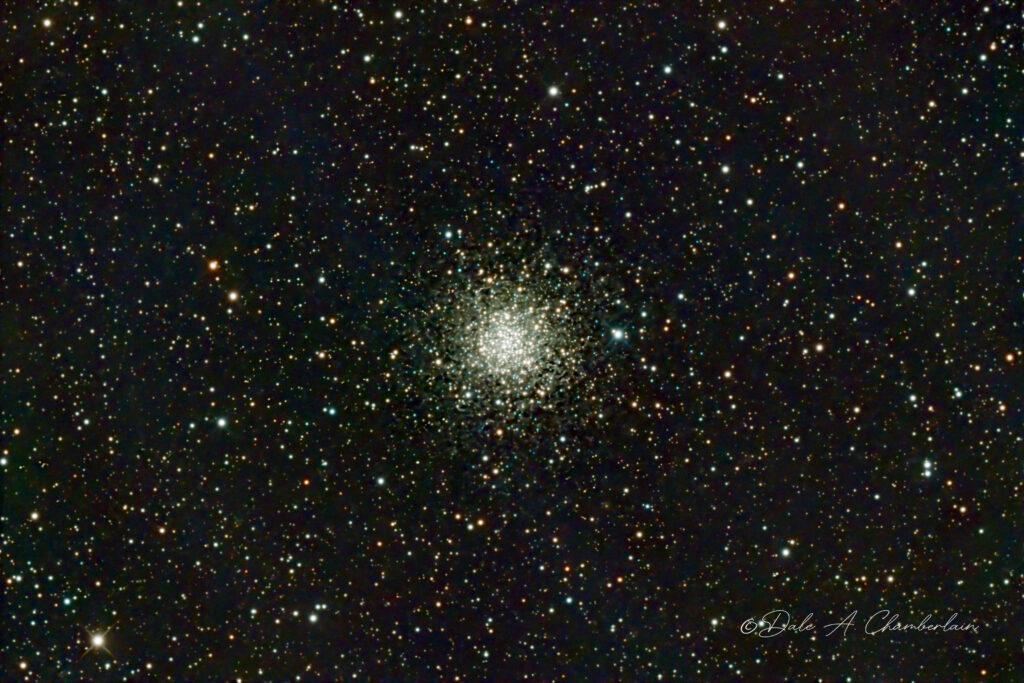
Object: Messier 56 (also known as M56 or NGC 6779) is a globular cluster in the constellation Lyra. It was discovered by Charles Messier in 1779. In a good night sky it is tricky to find with large (50-80 mm) binoculars, appearing as a slightly fuzzy star. The cluster can be resolved using a telescope with an aperture of 8 in (20 cm) or larger. M56 is about 32,900 light-years away from Earth and measures roughly 84 light-years across, containing 230,000 solar masses It is about 31-32 k light years from the Galactic Center and 4.8 k light years above the galactic plane. This cluster has an estimated age of 13.70 billion years and is following a retrograde orbit through the Milky Way. The properties of this cluster suggest that it may have been acquired during the merger of a dwarf galaxy, of which Omega Centauri forms the surviving nucleus. M56 is part of the Gaia Sausage, the hypothesized remains of a merged dwarf galaxy.
Taken: September 11, 2024
Telescope: Astro-Tech 14 inch RC with Starizona Apex ED 0.65x reducer
Mount: Paramount ME II unguided
Camera: ZWO ASI2600MC-Pro (cooled to 0C; Gain: 100) Bin 1×1.
Focuser: Moonlite Nitecrawler
Rotator: Moonlite Nitecrawler
Filters used: Optolong L-Quad Enhance 2″ with a Starizona 2″ filter drawer
Exposures: 128×90 seconds, for a total exposure time of 3.2 hours; calibrated with 40 dark frames, 40 flat frames with 40 flat-darks
Seeing Conditions: Average. Bortle 5 region.
Image capture and telescope control: Nighttime Imaging ‘N’ Astronomy with (N.I.N.A.) / TheSkyX Pro with a SkyShed POD MAX observatory.
Processed with PixInsight and Photoshop CC 2024